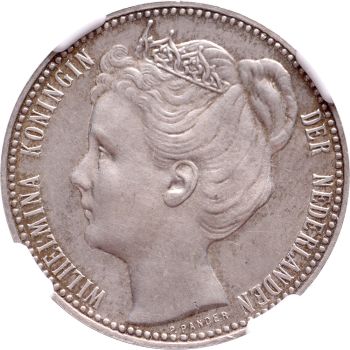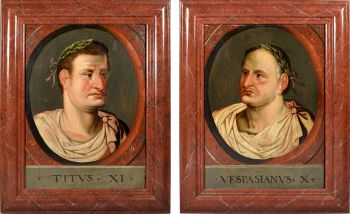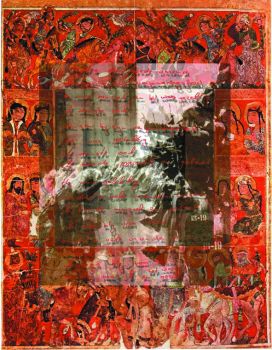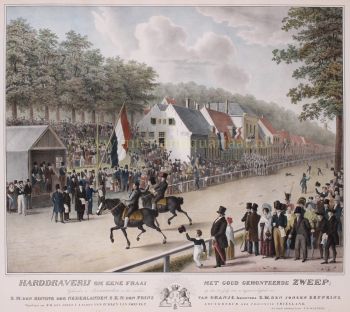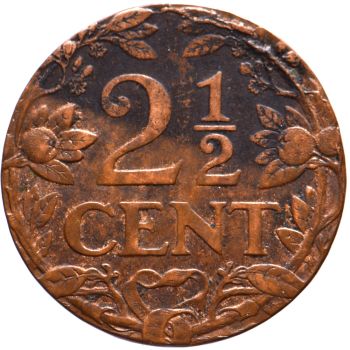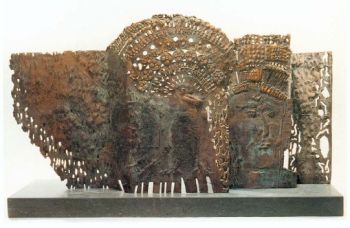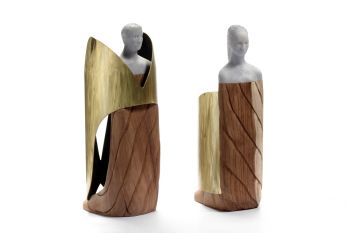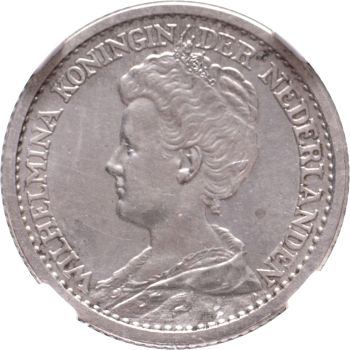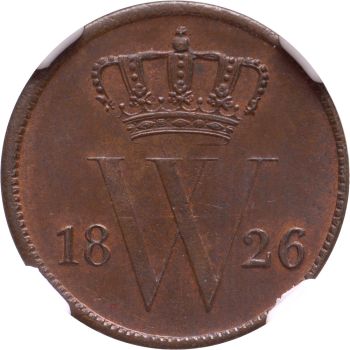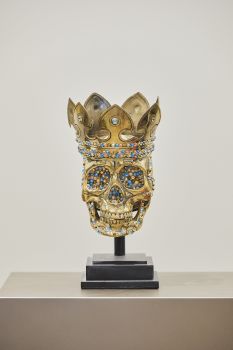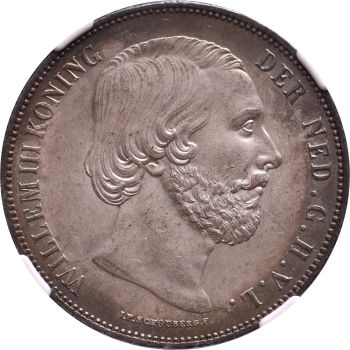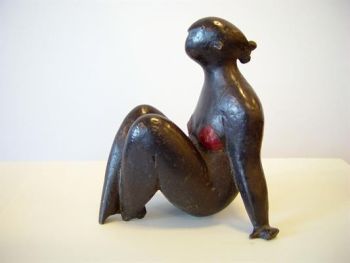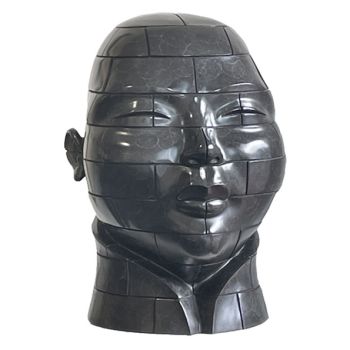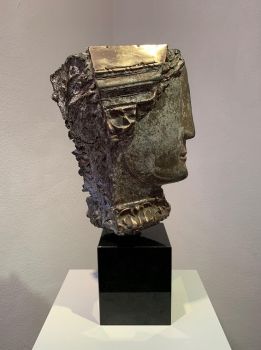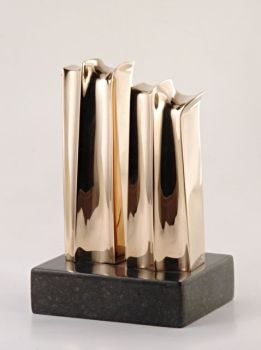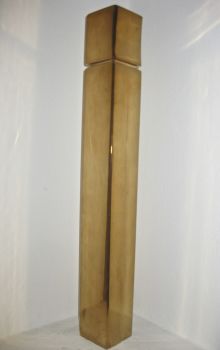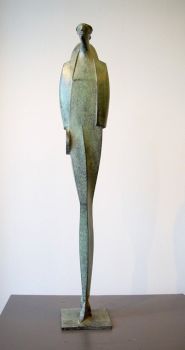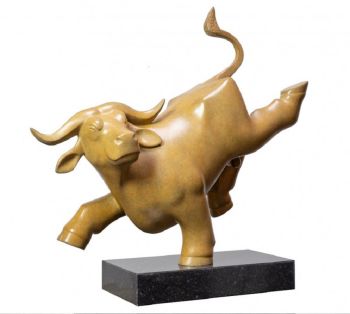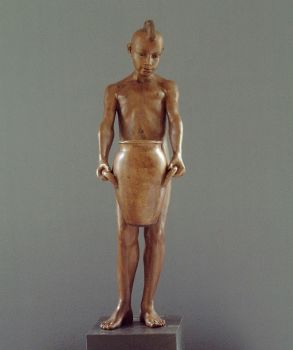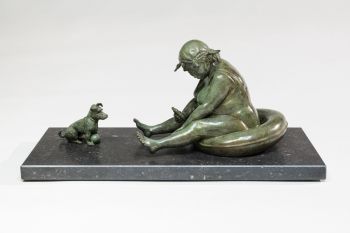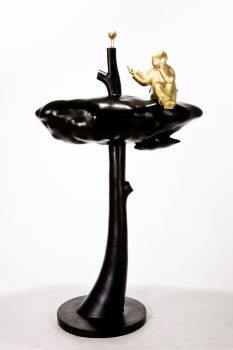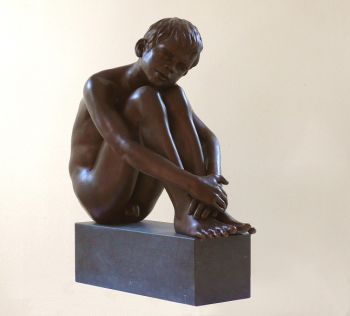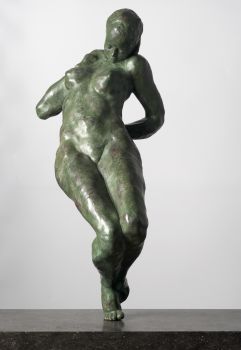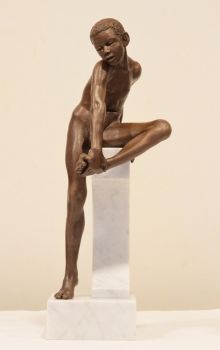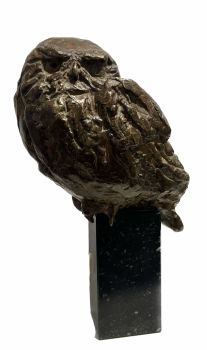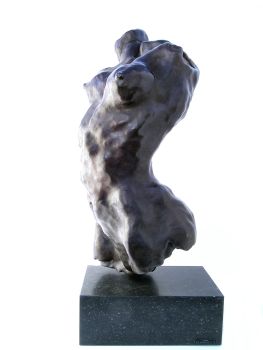French Louis XVI Portico Clock 1779 - 1781
Unbekannter Künstler
MarmorSteinBronzeMetallEmaille
63 ⨯ 48 ⨯ 17 cm
Derzeit nicht über Gallerease verfügbar
- Über KunstwerkOn eight gilt bronze feet a moulded white marble plinth decorated with ormolu rosettes, panels and beaded bands. On the left and right on a slightly higher level and surrounded by ormolu posts, two high black marble bases support two inverted white marble fasces topped by ormolu armillary spheres. Between these bases a seated ormolu lion looks upwards towards the clock above. The clock is suspended from both the black marble bases as from the fasces. On top of the clock, on his own black marble base, an ormolu statuette of the Roman god Mars.
On the clock the white enamel dial shows three rings: the inner one with Arabic numerals for the date, the middle ring with Roman numerals for the hours and the outer ring indicates the minutes. Two pierced gilt brass hands for the hours and minutes and one steel pointer for the dates. The movement with anchor escapement and a duration of eight days. The pendulum disk in the form of an Apollo mask surrounded by the rays of the sun.
The ormolu decorations on the black marble bases consist of war trophies with scaled shields, quivers with arrows, halberds and flags, the whole topped by palm leaves as a symbol of victory. The very unusual inverted fasces are, even more unusual, topped by armillary spheres and moreover flank Mars, the god of war.
If this clock tells us something, it might be this: After the victories of war (trophies and palm leaves), man should bury his arms (inverted fasces) and concentrate on science and arts (the spheres).
After all, this clock was made in the age of reason when the purpose was to advance knowledge by scientific methods. Astronomy was one of the seven liberal arts (sciences) of the Renaisssance and astronomical discoveries concerning the moon, earth and sun were made around 1740-1770. These discoveries were being published by the French Académie des Sciences during the second half of the century.
The white enamel dial unsigned, but marked “à Paris”. - Über Künstler
Es kann vorkommen, dass ein Künstler oder Hersteller unbekannt ist.
Bei einigen Werken ist nicht zu bestimmen, von wem sie hergestellt wurden, oder sie wurden von (einer Gruppe von) Handwerkern hergestellt. Beispiele sind Statuen aus der Antike, Möbel, Spiegel oder Signaturen, die nicht klar oder lesbar sind, aber auch einige Werke sind überhaupt nicht signiert.
Außerdem finden Sie folgende Beschreibung:
•"Zugeschrieben …." Ihrer Meinung nach wohl zumindest teilweise ein Werk des Künstlers
•„Atelier von ….“ oder „Werkstatt von“ Ihrer Meinung nach eine Arbeit, die im Atelier oder in der Werkstatt des Künstlers, möglicherweise unter seiner Aufsicht, ausgeführt wurde
•„Kreis von ….“ Ihrer Meinung nach ein Werk aus der Zeit des Künstlers, das seinen Einfluss zeigt, eng mit dem Künstler verbunden, aber nicht unbedingt sein Schüler
•"Art von …." oder „Anhänger von ….“ Ihrer Meinung nach eine Arbeit, die im Stil des Künstlers ausgeführt wurde, aber nicht unbedingt von einem Schüler; kann zeitgenössisch oder fast zeitgenössisch sein
•„Art von ….“ Ihrer Meinung nach ein Werk im Stil des Künstlers, aber späteren Datums
•"Nach …." Ihrer Meinung nach eine Kopie (jegliches Datums) eines Werks des Künstlers
• „Unterzeichnet …“, „Datiert …“. oder „Beschriftet“ Ihrer Meinung nach wurde das Werk vom Künstler signiert/datiert/beschriftet. Das Hinzufügen eines Fragezeichens weist auf einen Zweifel hin
• „Mit Unterschrift …“, „Mit Datum …“, „Mit Aufschrift ….“ oder „Trägt Unterschrift/Datum/Beschriftung“ ihrer Meinung nach die Unterschrift/Datum/Beschriftung von jemand anderem als dem Künstler hinzugefügt wurde
Artwork details
Related artworks
Unbekannter Künstler
Russische Ikone, die eine erweiterte Deesis darstellt1600 - 1650
Preis auf AnfrageKunsthandel H.W.C. Dullaert Icons
1 - 4 / 12Johannes Schiotling
Ein Paar holländische silberne Kerzenhalter1784
Preis auf AnfrageJacob J. Roosjen SRI
1 - 4 / 7Unbekannter Künstler
EINE SAMMLUNG VON VIER SRI LANKAN IVORY BIBELKÄSTCHEN18th century
Preis auf AnfrageZebregs & Röell - Fine Art - Antiques
Unbekannter Künstler
EIN GILT-SILBER SRI LANKAN DOKUMENT SCROLL CONTAINER19th century
Preis auf AnfrageZebregs & Röell - Fine Art - Antiques
 Kuratiert von
Kuratiert vonDanny Bree
Unbekannter Künstler
EIN JAPANISCHES MODELL EINES NORIMONO, EINES PALANQUINS1650 - 1700
Preis auf AnfrageZebregs & Röell - Fine Art - Antiques
1 - 4 / 24Unbekannter Künstler
Diamantarmband aus dem 18. Jahrhundert mit 2000 Jahre alten Intaglios1790
€ 23.000Adin Fine Antique Jewellery
 Kuratiert von
Kuratiert vonDanny Bree
1 - 4 / 24- 1 - 4 / 24




